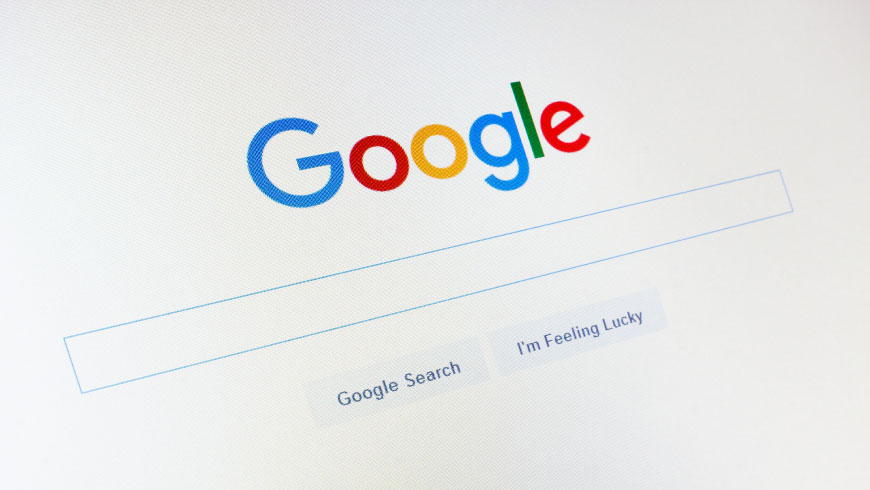There are hundreds of search engines available worldwide, but the most popular search engine is Google (unless you’re in China, Russia, or South Korea). Google earns between 65% and 89% of US and global search engine market share.
If Google is the gold standard in search engines, then how do you make sure your content appears on the first page of results? The answer is engaging content.
How Google Works
When you type a word or phrase into Google, the search engine doesn’t search through every single webpage on the internet. This would take way too long, and people don’t have that much patience. Instead, Google searches its own proprietary index, which is essentially an inventory of the web.
Matt Cutts, the head of Google’s web spam team and spokesperson for all things search-related, outlines how search works on Google:

Google delivers results in two steps. First, the search engine takes an inventory of all the content it can find on the internet. Then, when someone enters a query into its search engine, Google looks for matches and ranks them according to its assessment of their relevance and usefulness. The sites that best match this criteria appear closest to the top.
How Google Indexes Content
Getting found by Google isn’t hard if you’ve got good content. Google uses continuously running computer programs called “spiders” or “robots” to find and make an inventory of new content on the web. If your content is publicly visible and linked to by at least one other website on the web, it will eventually get found and indexed by Google’s spiders.
If you’re in a hurry, and don’t have time to wait for Google to find you, you can request near immediate indexation via Google’s Search Console. This free service helps website owners and developers monitor and maintain their website presence in Google Search results.
The key isn’t just to get indexed by Google, but to get indexed completely and accurately.
Fortunately for us, Google publishes Webmaster Guidelines to help website owners, developers, and search engine optimization (SEO) specialists better understand its needs and preferences. However, the guidelines are just that – general statements of policy, procedure, and advice. They are not ironclad rules, prescriptions, oir detailed specifications for success.
To better interpret the guidelines, it’s important to remember that Google is a business, and it’s goal is to make money. The search engine generates revenue by attracting large audiences and selling advertising. Google knows that if it helps people find free, relevant, and helpful information, its audience will grow. The larger Google’s audience, the more attractive it is to advertisers, and the more money it will make. This formula seems to be working; in 2015 Google earned a whopping $67.39 billion in advertising revenue, the largest proportion of the company’s total revenues.
How Google Ranks Content
As we’ve discovered, relevance and utility are at the heart of Google’s search rankings. In the video Cutts explains, at a high level, how Google decides what constitutes “relevant” and “helpful” information. For example, suppose we want to know the speed of a cheetah. If we type “how fast does the cheetah run” into the search bar, Google searches its index for all of the content that contains those words (or a semantic equivalent), and ranks the results by considering over 200 ranking factors:
- Do the words in the search query appear on the page?
- If so, how often and where?
- Is the page on a quality website?
- Do visitors spend a long time viewing the content?
- Do they share it with others?
- Do they reference it on their own website?
- Do others reference it?
- Are those websites reputable?
If we type “how fast does a cheetah run” into Google, we get the following results:
How Google Interprets Relevance
The first thing we notice is the visuals. There are six cheetah images above the fold (the content that is visible without scrolling down). You may also notice the words “cheetah,” “run,” ‘running,” and “speed,” highlighted in bold. These words appear 21 times above the fold, and are bolded so that users can easily spot the connection to their query. Visuals and bolded terms signal that the content is relevant.
Roughly 33% of searchers click on the top search result, so let’s take a look at Google’s highest ranked result for our cheetah query. In this case, it’s a YouTube video with a title and description that contains our search terms – Running Cheetah on High Speed HD Camera. The human brain responds to visual information 60,000 times faster than text, and according to Neil Patel, visual content increases click-through rates.
How Google Interprets Helpfulness
Google determines how useful your content is based on the quality and level of engagement with the content.
Is the page on a quality website?
The first result in the Cheetah query was a YouTube link. YouTube is one of the most popular and highly-regarded video streaming websites in the world. It’s owned by Google and ranks as the third most popular website, only behind Google and Facebook.How much time do visitors spend viewing the content?
Do people spend a long time viewing the content?
Since we don’t own the YouTube video, we can’t see how much time visitors spend on this page. However, we can see that the page has 405 subscribers, roughly 680,000 views, 2,431 thumbs up, and 344 comments.
Do people share it with others?
Google knows exactly how much time people are spending on this particular page because Google owns YouTube. But what happens when the content resides on other sites? Can Google discern traffic patterns and visitor behavior on those sites?
The answer is “yes” (kind of). Google measures engagement through its search engine, Chrome browser, and popular Google Analytics tool. These tools give Google detailed stats on:
- click-through rates
- bounces (when someone leaves the site after having viewed only a single page)
- dwell time (the time it takes a visitor to return back to search results)
- time on page
- time on site
Do others reference it? Are those websites reputable?
Google knows when a visitor has commented on a page because the next time its spiders come around for a visit, they will be able to see that the content has been updated. Similarly, when it revisits social media and websites, it can easily discern when content has been shared or linked to.
Create Useful Content
The Running Cheetah YouTube video earned 598 shares since it was first uploaded in 2012. That, in addition to the publically viewable statistics we mentioned earlier, are a pretty good indication that the video was helpful to its viewers.
There are a number of tools out there that can help you measure how many shares a piece of content has earned. However, it’s important to remember that shares by themselves don’t help you earn higher search results. They do earn exposure, and often with exposure comes traffic and links. If nothing else, it will create brand awareness.
When it comes to getting a better ranking in Google, links are gold. Especially, when those links come from highly reputable sources that are already indexed by Google. Links are like votes or endorsements for your content. They signal popularity and, if coming from a trusted source, they create authority.
The Running Cheetah video earned 43 external backlinks from 18 different sources. At least three of those links come from highly reputable websites (like businessinsider.com).
Links from reputable websites have way more influence when it comes to ranking because they signal respectability and peer acceptance to Google. The more high-quality inbound links you earn, the higher you will rank.
Don’t Neglect SEO
It’s important to remember that visual content still needs to be optimized for search engines. SEO is the process of ensuring your content gets completely and accurately indexed by Google. It takes care of the details that aren’t spelled out in Google Webmaster Guidelines, and helps you write the kind of content your audience cares about. SEO paired with highly engaging content and the right promotion strategy gets you the exposure you need to earn the signals that tell Google your content is helpful.
Engaging Content is the Golden Ticket
Engaging content is at the heart of a solid search ranking. Great content increases click-through rates and earns more repeat site visits, links, shares, and higher time on page. This signals that your content is relevant, useful, and deserves to rank higher in search results. As more people engage with and link to your content, you’ll start to see it climb to the top of the search engine rankings.
Donna Duncan owns and consults at B-SeenOnTop, a SEO and Content Marketing firm in Philadelphia. She believes the more search engine optimization (SEO) and content marketing make sense, the more businesses get out of them. You can follow her on Twitter at @beseenontop.







